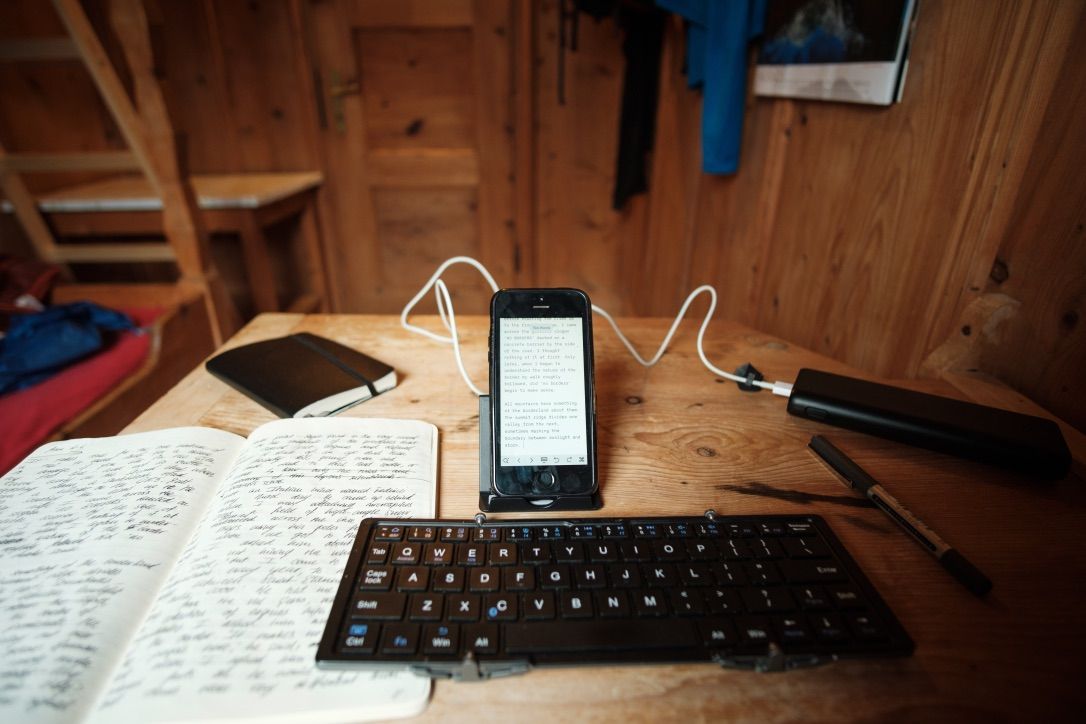Paper vs. digital journaling on a long-distance trail

When I go backpacking, keeping a journal is an important part of the process for me – as important as taking photographs. But should you keep a digital journal or record your thoughts in a real, physical notebook? Here’s what I’ve learned about the pros and cons of each.
A version of this piece first appeared in my Pinnacle Newsletter on May 4 2019. Sign up here for weekly newsletters on the outdoors, writing, and outdoor writing.
First of all, there is no right answer to this conundrum. Over the last 15 years I’ve used both methods more or less equally, and have come to appreciate the unique benefits of each technique. And there’s no need to stick religiously to one or the other, either – some kinds of trips lend themselves to keeping a journal in a notebook, while other objectives may be better suited to jotted records in the Notes app on your phone. Before I dive in, the most important point is that there’s no need to overthink this. Consider the pros and cons, but do whatever works for you.
Benefits of a paper journal
- If you’re accustomed to handwriting, it can encourage keeping richer, more detailed notes. I tend to write more when I write by hand and I record events in far greater detail. Digital encourages me to be brief, but a pen encourages focus, immersion, and the more vivid recall of events.
- A notebook never needs recharging. You can write in it for hours without draining the battery on your phone. It works in deep cold or fierce sunlight, too.
- You can draw a map, scribble in the margins, do whatever you like. In some ways it’s a less constrained medium.
- Your notebook is a tangible artefact of your adventure that, if carefully stored, will be readable decades from the moment you create it. The file format will never become obsolete and it’ll never start charging you a subscription fee to read your notes.
- If you type out your journal in a computer at a later date, you get to relive your experience all over again, and potentially add in more detail. This is a huge advantage if you write about your adventures.

Benefits of a digital journal
- You already carry a smartphone, and that’s all you need to keep a digital journal. There’s no need to carry an additional item that adds weight and bulk to your pack. A digital notebook will never run out of space, either – no more rationing pages on a long trip.
- While handwriting can encourage richer recall, digital is more accessible and convenient. It’s easy to whip your phone out of your pocket and dash down a few lines many times during the day – potentially even embedding audio clips, photos, and other media into the note.
- Want to add a few paragraphs to a journal entry from a week back? On paper that would be awkward, but with a digital journal you can easily insert new text anywhere.
- A digital journal can be backed up, shared, emailed, cut and pasted into blog posts, and duplicated. It’s also easily searchable: a major benefit when it’s time to read through your journal and start writing features about the trip.
- If carefully stored in a sensible file format (plain text or PDF, ideally), a digital journal can be as long-lasting as paper.
I think that sums it up. Anything you’d add? I still haven’t decided whether to take a paper notebook on my upcoming Haute Route Pyrenees. I kept a journal on paper during my Cape Wrath Trail, and was glad I did, because it encouraged me to write in far greater detail. And, now that I’m typing it up into my computer prior to turning the experience into a book, I’m finding it a valuable aid to memory. But there is no right or wrong answer to this, and I’ll continue to use both paper and digital journaling techniques on various trips in future.
Header image © James Roddie Photography
Alex Roddie Newsletter
Join the newsletter to receive the latest updates in your inbox.




